AI History - Inception and Early Approaches (1943 - 1969)
Early AI Approaches (1943-1969) - Searching Algorithms
Problem Definition
Formal Definition
Computational Representation
Early AI Approaches (1943-1969) - Searching Algorithms
Problem Definition
Formal Definition
Computational Representation
An agent must find a way to reach a goal in its environment. But, the next step is not obvious.
Early AI Approaches (1943-1969) - Searching Algorithms
Problem Definition
Formal Definition
Computational Representation
An agent must find a way to reach a goal in its environment. But, the next step is not obvious.
A search problem is defined by a set of states, an initial state, a set of goal states, and a set of actions or transitions between states.
Early AI Approaches (1943-1969) - Searching Algorithms
Problem Definition
Formal Definition
Computational Representation
An agent must find a way to reach a goal in its environment. But, the next step is not obvious.
A search problem is defined by a set of states, an initial state, a set of goal states, and a set of actions or transitions between states.
A search problem is typically modelled using data structures such as graphs, adjacency matrices, queues and stacks.

Early AI Approaches (1943-1969) - Searching Algorithms

Early AI Approaches (1943-1969) - Searching Algorithms


Early AI Approaches (1943-1969) - Searching Algorithms

Early AI Approaches (1943-1969) - Searching Algorithms


Early AI Approaches (1943-1969) - AI Perception
Early AI Approaches (1943-1969) - AI Perception
"Within ten years a digital computer will be the world's chess champion." (Simon & Newell, 1958)
"Machines will be capable, within twenty years, of doing any work a man can do." (Simon, 1965)
"Within a generation... the problem of creating 'artificial intelligence' will substantially be solved." (Minsky, 1967)
"In from three to eight years we will have a machine with the general intelligence of an average human being." (Minsky, 1970)
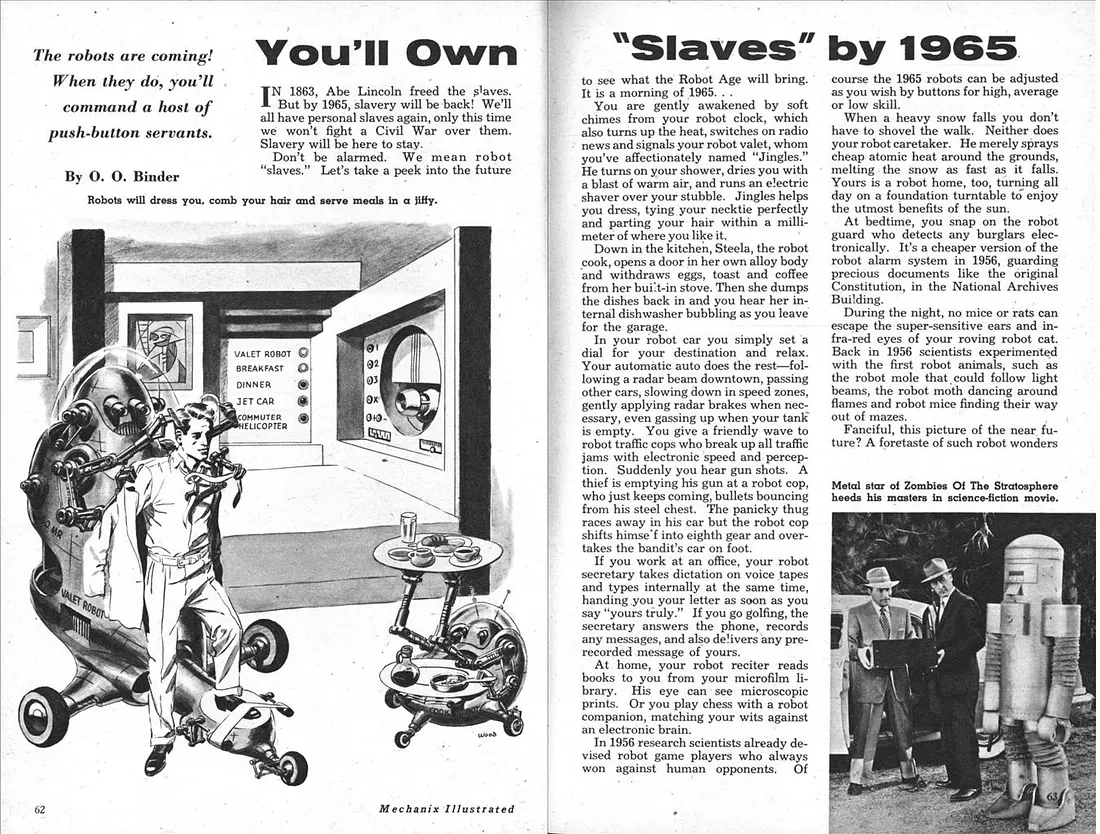
Early AI Approaches (1943-1969) - AI Perception
"Within ten years a digital computer will be the world's chess champion." (Simon & Newell, 1958)
"Machines will be capable, within twenty years, of doing any work a man can do." (Simon, 1965)
"Within a generation... the problem of creating 'artificial intelligence' will substantially be solved." (Minsky, 1967)
"In from three to eight years we will have a machine with the general intelligence of an average human being." (Minsky, 1970)

Early AI Approaches (1943-1969) - AI Perception
"Within ten years a digital computer will be the world's chess champion." (Simon & Newell, 1958)
"Machines will be capable, within twenty years, of doing any work a man can do." (Simon, 1965)
"Within a generation... the problem of creating 'artificial intelligence' will substantially be solved." (Minsky, 1967)
"In from three to eight years we will have a machine with the general intelligence of an average human being." (Minsky, 1970)
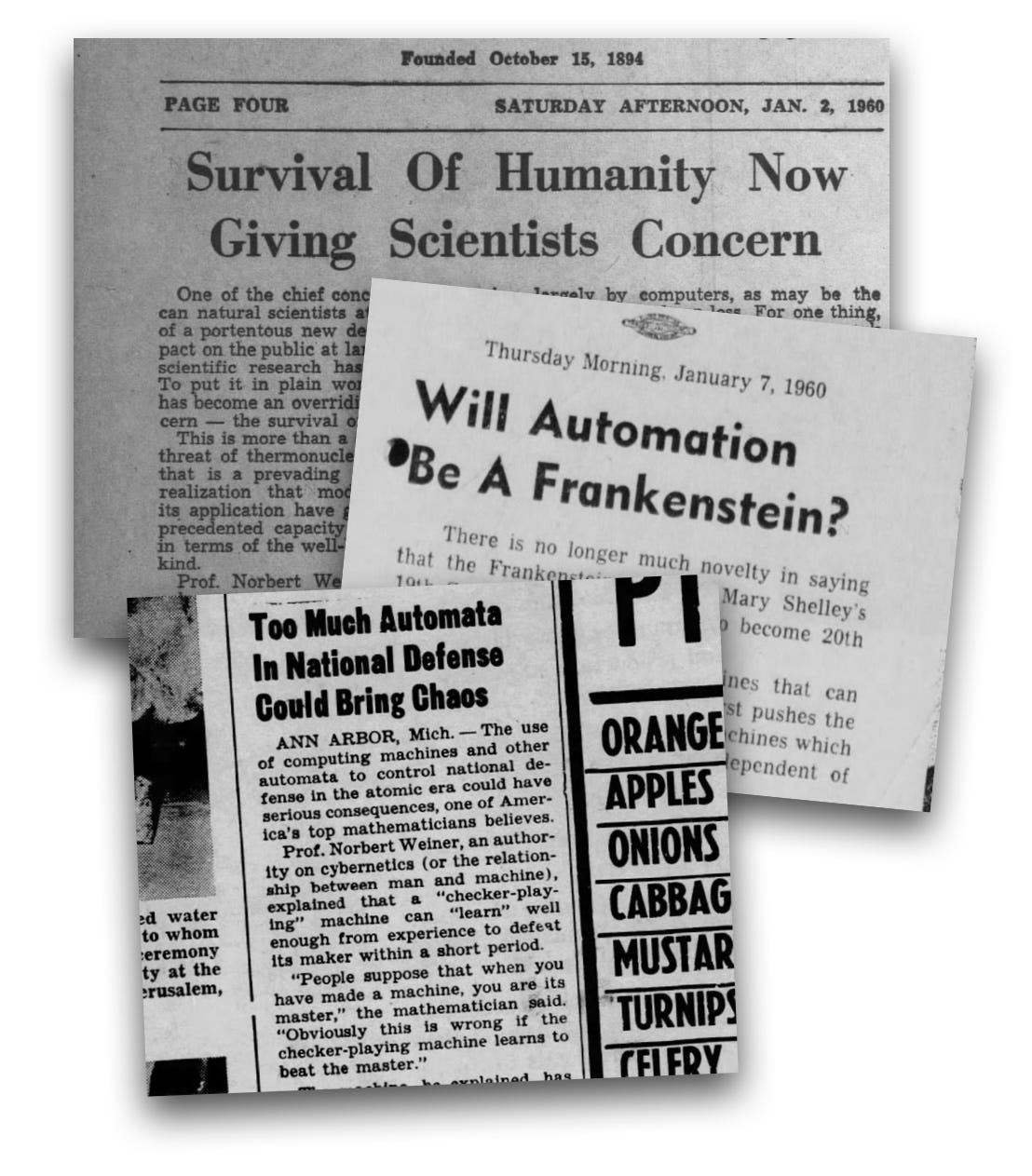
Early AI Approaches (1943-1969) - AI Perception
"Within ten years a digital computer will be the world's chess champion." (Simon & Newell, 1958)
"Machines will be capable, within twenty years, of doing any work a man can do." (Simon, 1965)
"Within a generation... the problem of creating 'artificial intelligence' will substantially be solved." (Minsky, 1967)
"In from three to eight years we will have a machine with the general intelligence of an average human being." (Minsky, 1970)
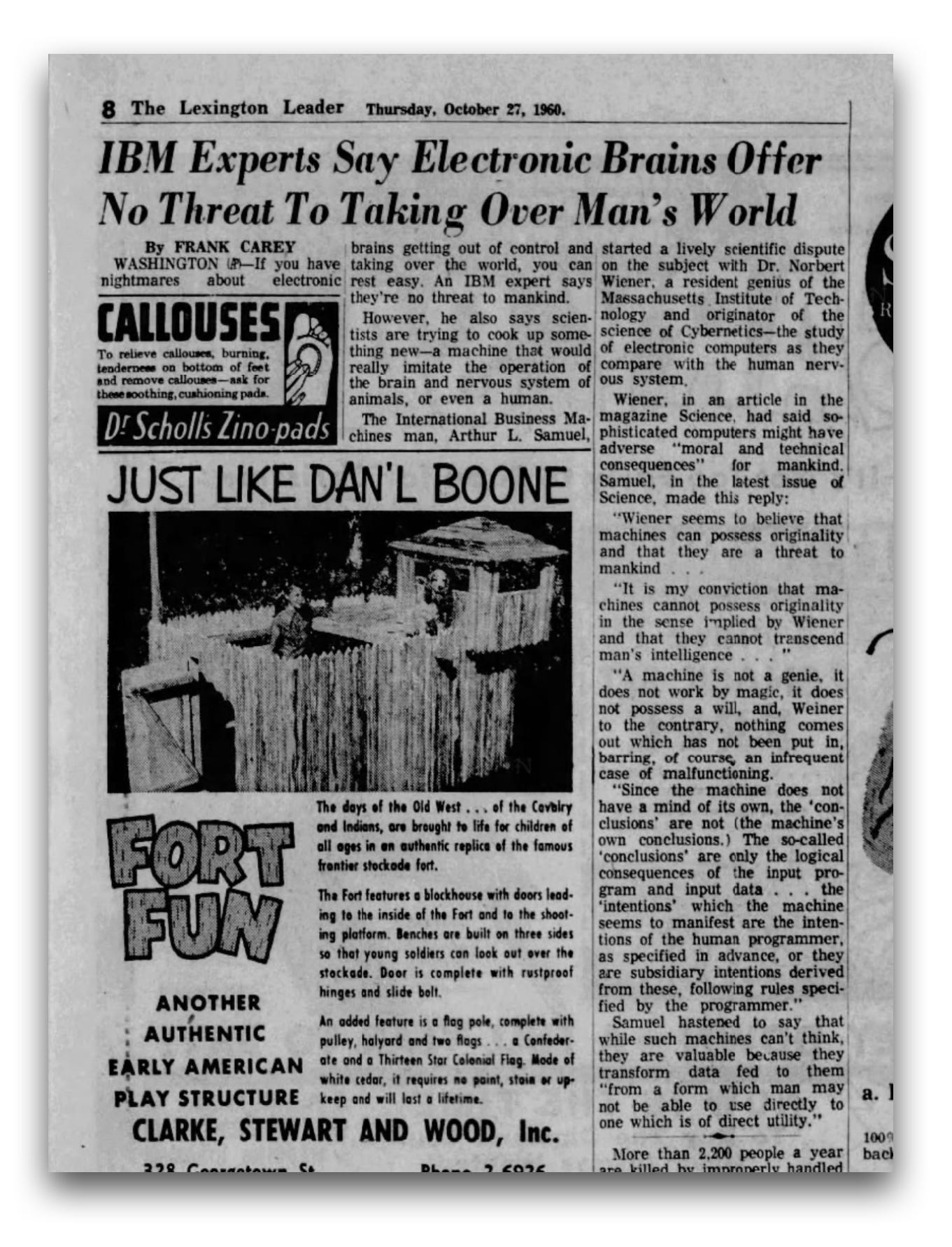
Early AI Approaches (1943-1969) - AI Limitations
Early AI Approaches (1943-1969) - AI Limitations
Computing power, algorithms, and data were insufficient to solve real-world problems.
Combinatorial explosion
Easy tasks for humans are difficult for AI (Moravec's Paradox)
Early AI Approaches (1943-1969) - AI Limitations

Computing power, algorithms, and data were insufficient to solve real-world problems.
Combinatorial explosion
Easy tasks for humans are difficult for AI (Moravec's Paradox)
Early AI Approaches (1943-1969) - AI Limitations

Computing power, algorithms, and data were insufficient to solve real-world problems.
Combinatorial explosion
Easy tasks for humans are difficult for AI (Moravec's Paradox)
Early AI Approaches (1943-1969) - AI Limitations

Computing power, algorithms, and data were insufficient to solve real-world problems.
Combinatorial explosion
Easy tasks for humans are difficult for AI (Moravec's Paradox)
AI History - First Winter (1974 - 1980)
AI History - Expert Systems (1969 - 1986)
Expert Systems (1969-1986) - Knowledge-Based Systems
Problem Definition
Formal Definition
Computational Representation
Expert Systems (1969-1986) - Knowledge-Based Systems
Problem Definition
Formal Definition
Computational Representation
Agents are limited because of the problem's complexity. They should leverage human knowledge and emulate human reasoning.

Expert Systems (1969-1986) - Knowledge-Based Systems
Problem Definition
Formal Definition
Computational Representation
Agents are limited because of the problem's complexity. They should leverage human knowledge and emulate human reasoning.

An expert system is defined by a knowledge base, inference engine, and user interface that work together to apply domain expertise to specific problems.
Expert Systems (1969-1986) - Knowledge-Based Systems
Problem Definition
Formal Definition
Computational Representation
Agents are limited because of the problem's complexity. They should leverage human knowledge and emulate human reasoning.

An expert system is defined by a knowledge base, inference engine, and user interface that work together to apply domain expertise to specific problems.
Knowledge is typically modelled using subject, object, predicate semantic triple model.
Rules are if statements.
Expert Systems (1969-1986) - Knowledge-Based Systems
"An ontology is an explicit specification of a shared conceptualisation." (Gruber, 1993)
Expert Systems (1969-1986) - Knowledge-Based Systems

"An ontology is an explicit specification of a shared conceptualisation." (Gruber, 1993)
Expert Systems (1969-1986) - Knowledge-Based Systems

"An ontology is an explicit specification of a shared conceptualisation." (Gruber, 1993)
Expert Systems (1969-1986) - Knowledge-Based Systems
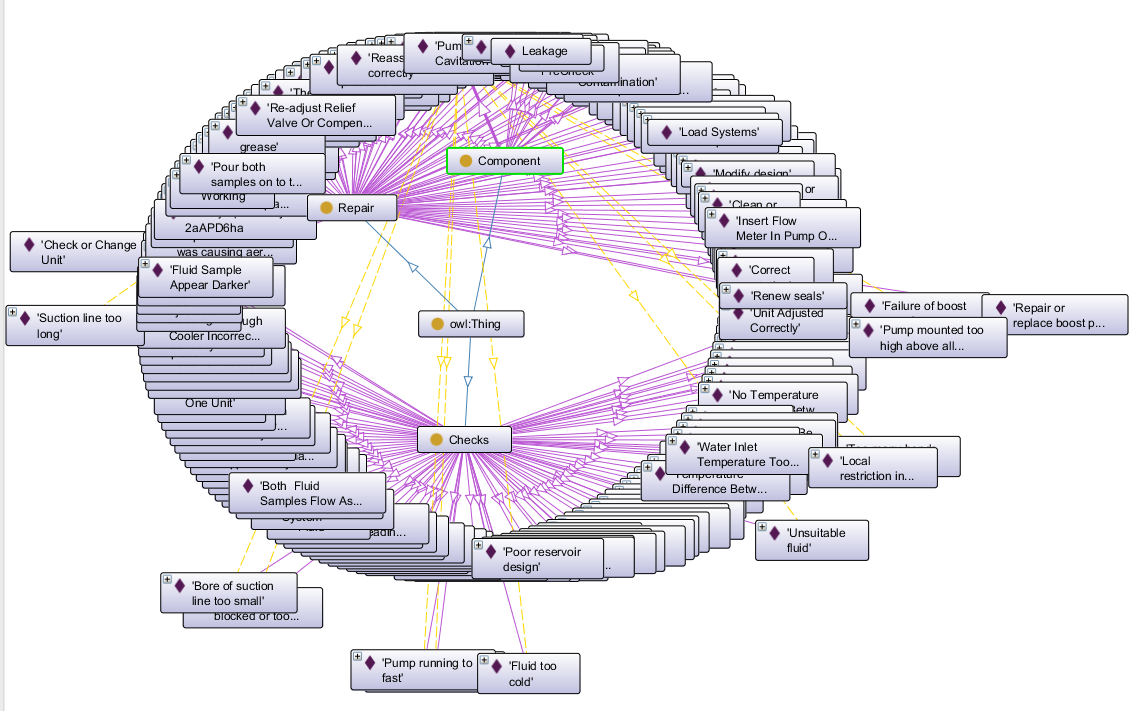
"An ontology is an explicit specification of a shared conceptualisation." (Gruber, 1993)
Expert Systems (1969-1986) - Knowledge-Based Systems
Knowledge Base
Example: Medical diagnosis
The expert system embodies medical knowledge
Forward Chaining (Data-Driven)
Facts: The patient has fever, cough, headache, and muscle pain
Rules: R1: If (fever AND cough) then (possible_flu) R2: If (possible_flu AND headache) then (influenza) R3: If (influenza AND muscle_pain) then (severe_case)
Process: Facts: [fever, cough, headache, muscle_pain] → apply R1: add possible_flu Facts: [headache, muscle_pain, possible_flu] → apply R2: add influenza Facts: [muscle_pain, influenza] → apply R3: conclude sever_case
Expert Systems (1969-1986) - Knowledge-Based Systems
Knowledge Base
Example: Medical diagnosis
The expert system embodies medical knowledge
Backward Chaining (Goal-Driven)
Facts: The patient has fever, cough, headache, and muscle pain
Goal: Determine if the patient's case is severe
Rules: R1: If (fever AND cough) then (possible_flu) R2: If (possible_flu AND headache) then (influenza) R3: If (influenza AND muscle_pain) then (severe_case)
Process: → check for severe_case via R3 → check for muscle_pain (found) → check for influenza via R2 → check for headache (found) → check for possible_flu via R1 → check for fever and cough → conclude severe_case is true
Expert Systems (1969-1986) - Relative Success
Expert Systems (1969-1986) - Relative Success
DENDRAL (1960s)
Identified unknown organic molecules using knowledge of chemistry
MYCIN (Early 1970s)
Supported bacterial infections diagnosis and treatment
XCON/R1 (1982)
eXpert CONfigurer - Automated the configuration of VAX computer systems (successful deployment)
Expert Systems (1969-1986) - Relative Success
DENDRAL (1960s)
Identified unknown organic molecules using knowledge of chemistry
MYCIN (Early 1970s)
Supported bacterial infections diagnosis and treatment
XCON/R1 (1982)
eXpert CONfigurer - Automated the configuration of VAX computer systems (successful deployment)
PUFF (1982)
Interpreted pulmonary function test results to diagnose lung disorders
PROSPECTOR (1986)
An expert system for mineral exploration
DEEP BLUE (1997)
An expert system that defeated a chess world champion
Expert Systems (1969-1986) - AI Perception
Expert Systems (1969-1986) - AI Perception
"In medicine, management, and the military — indeed in most of the world's work — the daily tasks are those requiring symbolic reasoning with detailed professional knowledge." (Feigenbaum, 1982)
"Commercialising Artificial Intelligence." (The New York Times, 1982)
"Gains are Slow for Artificial Intelligence Industry." (The New York Times, 1987)
"New expert systems companies were being formed at a rate of what seemed like one a week. " (Hart, 2021)
Expert Systems (1969-1986) - AI Perception
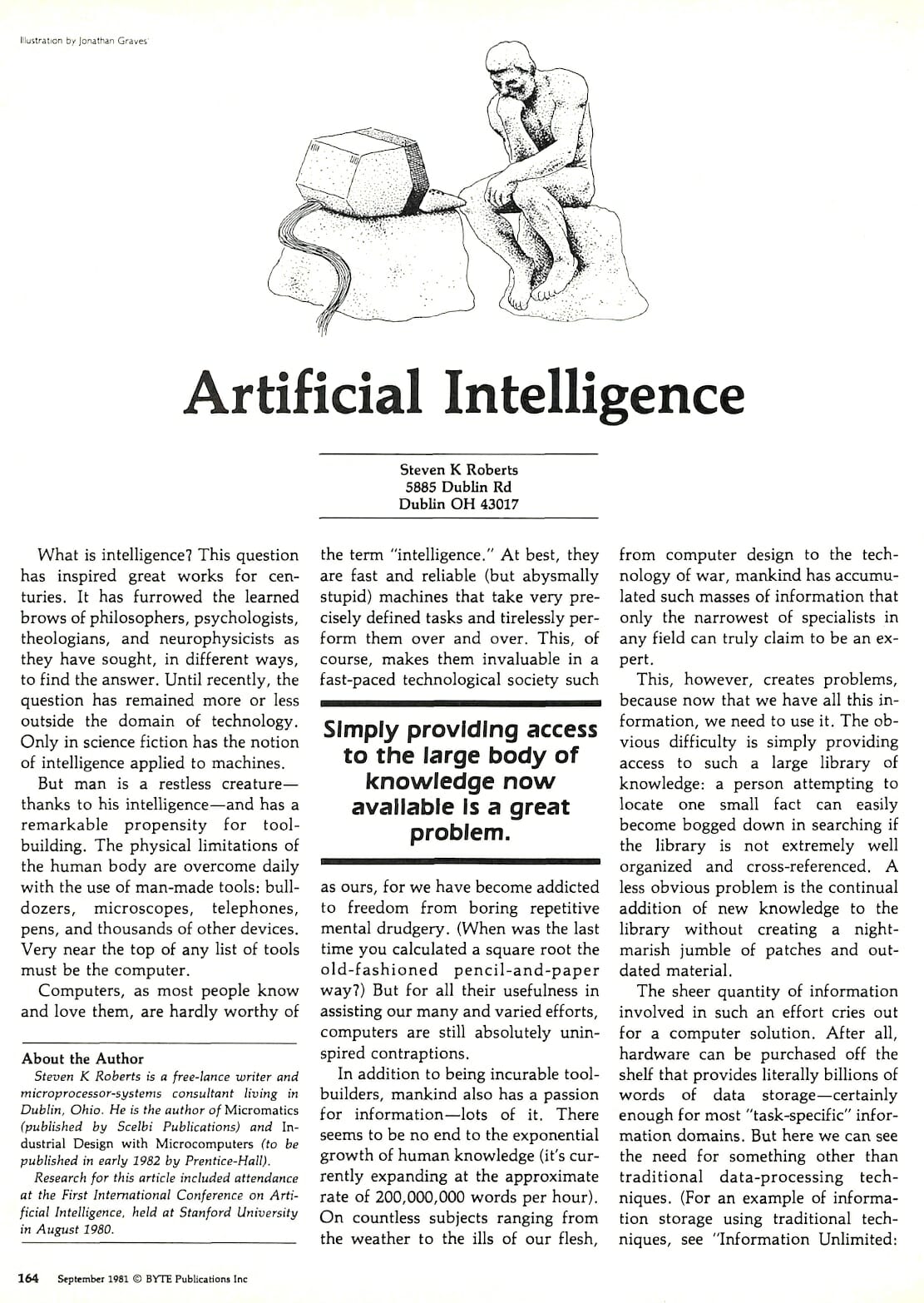
"In medicine, management, and the military — indeed in most of the world's work — the daily tasks are those requiring symbolic reasoning with detailed professional knowledge." (Feigenbaum, 1982)
"Commercialising Artificial Intelligence." (The New York Times, 1982)
"Gains are Slow for Artificial Intelligence Industry." (The New York Times, 1987)
"New expert systems companies were being formed at a rate of what seemed like one a week. " (Hart, 2021)
Expert Systems (1969-1986) - AI Perception
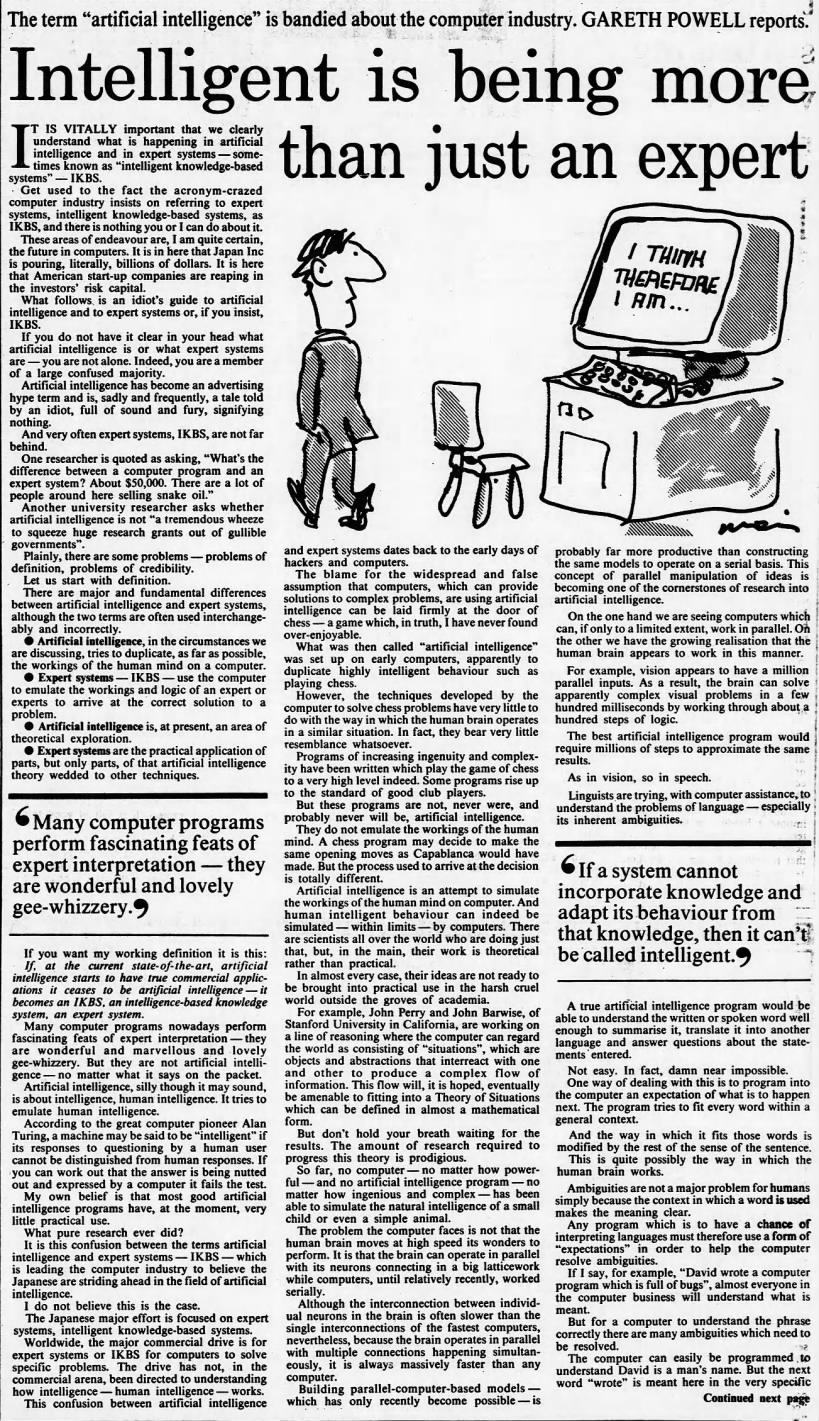
"In medicine, management, and the military — indeed in most of the world's work — the daily tasks are those requiring symbolic reasoning with detailed professional knowledge." (Feigenbaum, 1982)
"Commercialising Artificial Intelligence." (The New York Times, 1982)
"Gains are Slow for Artificial Intelligence Industry." (The New York Times, 1987)
"New expert systems companies were being formed at a rate of what seemed like one a week. " (Hart, 2021)
Expert Systems (1969-1986) - AI Perception

"In medicine, management, and the military — indeed in most of the world's work — the daily tasks are those requiring symbolic reasoning with detailed professional knowledge." (Feigenbaum, 1982)
"Commercialising Artificial Intelligence." (The New York Times, 1982)
"Gains are Slow for Artificial Intelligence Industry." (The New York Times, 1987)
"New expert systems companies were being formed at a rate of what seemed like one a week. " (Hart, 2021)
Expert Systems (1969-1986) - AI Perception

"In medicine, management, and the military — indeed in most of the world's work — the daily tasks are those requiring symbolic reasoning with detailed professional knowledge." (Feigenbaum, 1982)
"Commercialising Artificial Intelligence." (The New York Times, 1982)
"Gains are Slow for Artificial Intelligence Industry." (The New York Times, 1987)
"New expert systems companies were being formed at a rate of what seemed like one a week. " (Hart, 2021)
Expert Systems (1969-1986) - AI Limitations
Expert Systems (1969-1986) - AI Limitations

Extracting knowledge from human experts and encoding it into rules was difficult, time-consuming, and expensive
Systems could not reason beyond their pre-programmed knowledge and failed when confronted with unexpected situations
Adding more rules often led to rule interaction problems and combinatorial explosion
Updating knowledge bases as domains evolved required significant effort
AI History - Second AI Winter (1987 - 1994)
AI History - Learning from Examples (1987 - present)
Learning from Examples (1987 - present) - Data-Driven Algorithms
Problem Definition
Formal Definition
Computational Representation
Learning from Examples (1987 - present) - Data-Driven Algorithms
Problem Definition
Formal Definition
Computational Representation
Agents cannot be fully pre-programmed. Agent must learn from examples to perform a task.

Learning from Examples (1987 - present) - Data-Driven Algorithms
Problem Definition
Formal Definition
Computational Representation
Agents cannot be fully pre-programmed. Agent must learn from examples to perform a task.

Learning from examples requires a function that approximates patterns in data, using a learning algorithm, and evaluation criteria.
Learning from Examples (1987 - present) - Data-Driven Algorithms
Problem Definition
Formal Definition
Computational Representation
Agents cannot be fully pre-programmed. Agent must learn from examples to perform a task.

Learning from examples requires a function that approximates patterns in data, using a learning algorithm, and evaluation criteria.
Learning algorithms use different computational representations during the learning and inference: dataframes, tuples, trees, graphs, matrices, etc.
Learning from Examples (1987 - present) - Data-Driven Algorithms
Learning from Examples (1987 - present) - Data-Driven Algorithms

Learning from Examples (1987 - present) - Data-Driven Algorithms

Learning from Examples (1987 - present) - Data-Driven Algorithms
Learning from Examples (1987 - present) - Data-Driven Algorithms
Learning from Examples (1987 - present) - Data-Driven Algorithms
AI History - Big Data (2000s)
AI History - Big Data (2000s)
AI History - Big Data (2000s)
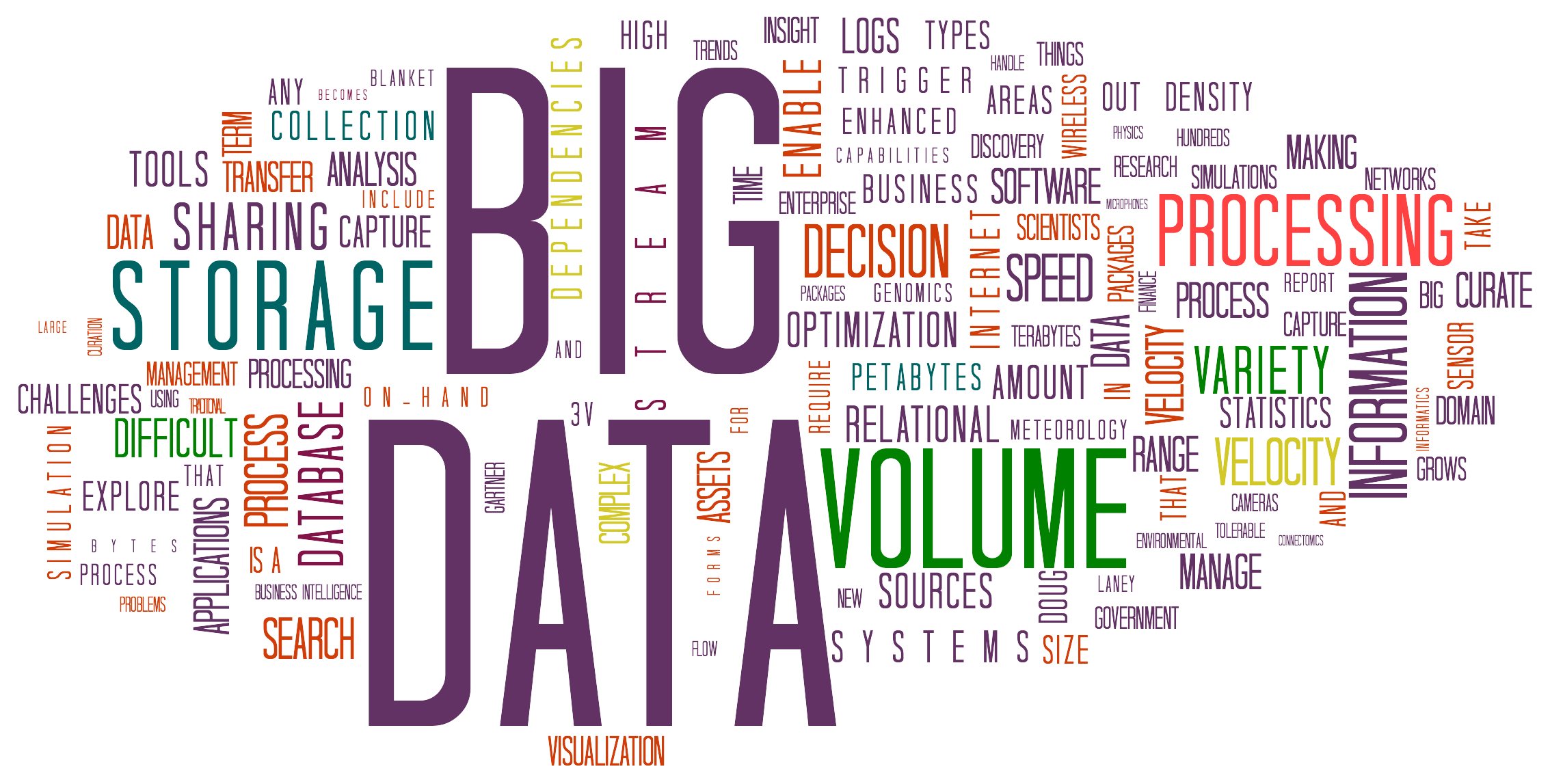
AI History - Big Data (2000s)
Large and complex datasets that improve models' statistical power
- Social Networks
- Mobile Computing
- Internet of Things
- ...

AI History - Big Data (2000s)

AI History - Machine Learning Age (2001 - present)
ML Today
AI Today - Applications
AI Today - Applications
Everyday Applications
- Voice and Chat Assistants (Siri, Chat-GPT)
- Content Recommendations (Netflix, Spotify)
- Smart Home Devices
- Facial Recognition
- Language Translation
- Fraud Detection
- Personalised Marketing
- Gaming
- ...

AI Today - Promises
AI Today - Promises
Promises
- Early diagnosis and personalised medicine
- Drug discovery
- Climate change solutions
- Personalised learning
- Accelerating science
- Productivity boost, automation
- Smart homes, cities, etc.
- ...
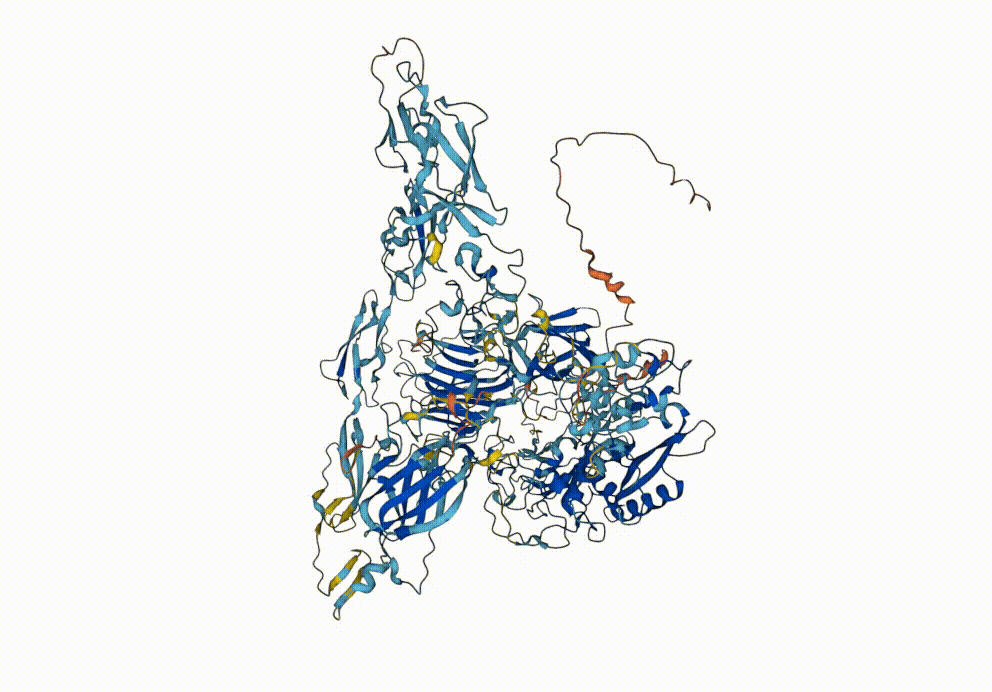
AI Today - Risks
AI Today - Risks

Risks
- Bias and discrimination, privacy violations
- Job displacement, digital divide
- Data quality issues, system vulnerabilities
- Adversarial attacks, data breaches
- Implementation costs, market disruption
- Energy consumption, carbon footprint
- Regulatory compliance, liability issues
- ...
AI Today - Risks

Risks
- Bias and discrimination, privacy violations
- Job displacement, digital divide
- Data quality issues, system vulnerabilities
- Adversarial attacks, data breaches
- Implementation costs, market disruption
- Energy consumption, carbon footprint
- Regulatory compliance, liability issues
- ...
ML Perception
ML Perception
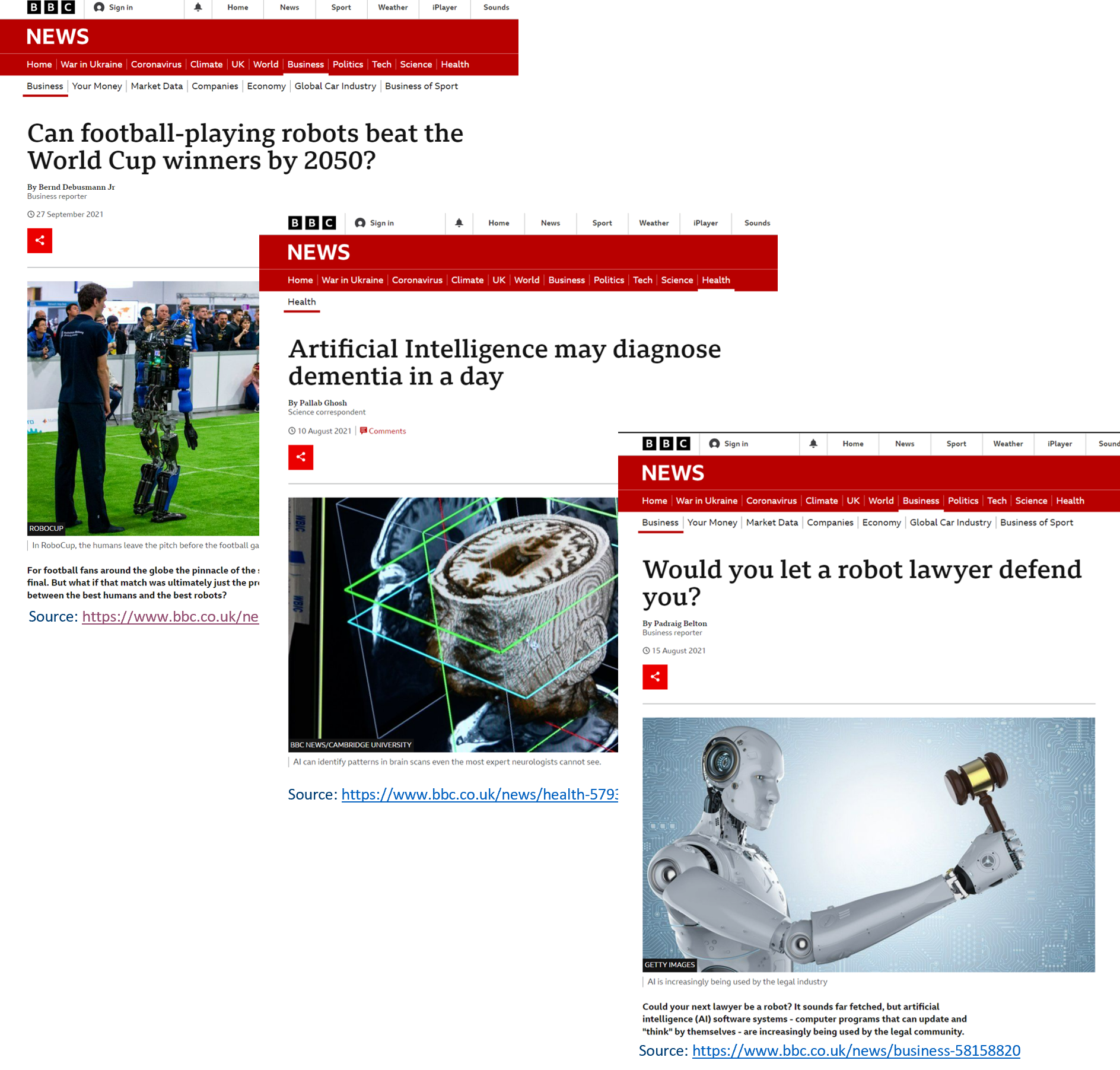
ML Perception

ML Perception
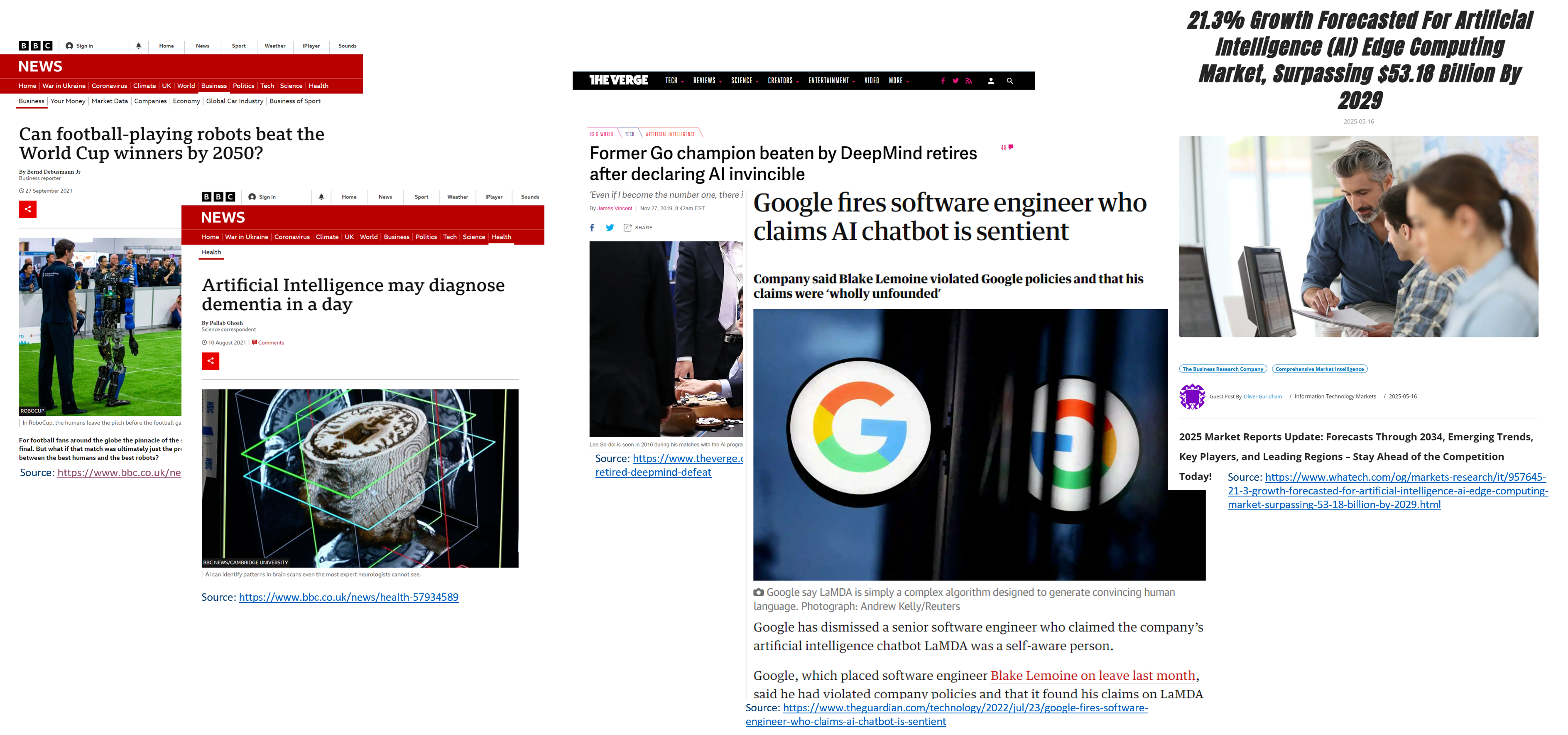
ML Perception
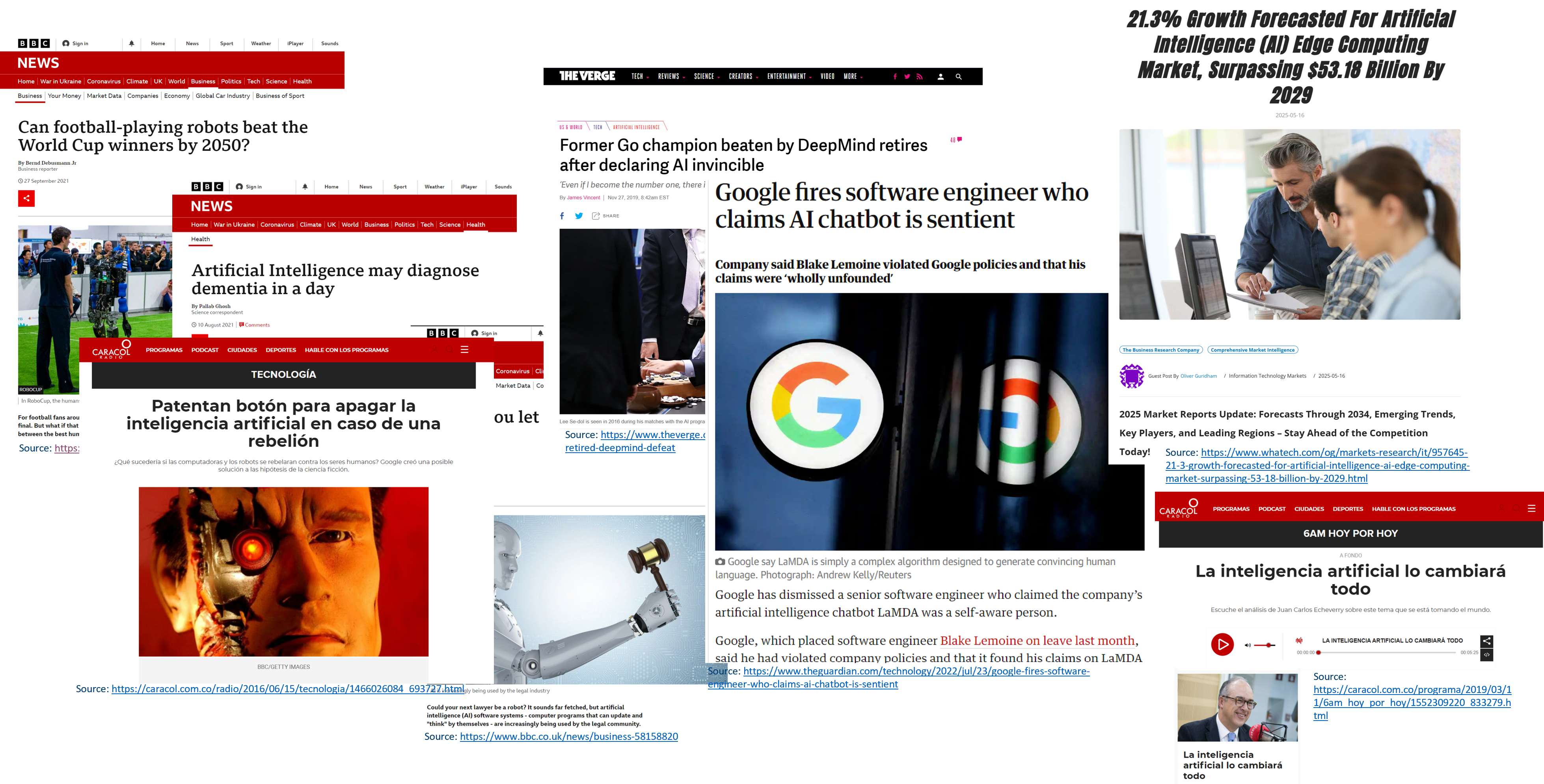
ML Perception
"We should be able to do 90 percent of miles driven [autonomously] within three years." (Musk, 2013)
"From a technology standpoint, Tesla will have a car that can do full autonomy in about three years, maybe a bit sooner." (Musk, 2015)
"I feel very confident predicting that there will be autonomous robotaxis from Tesla next year." (Musk, 2019)
...
ML Perception
"We should be able to do 90 percent of miles driven [autonomously] within three years." (Musk, 2013)
"From a technology standpoint, Tesla will have a car that can do full autonomy in about three years, maybe a bit sooner." (Musk, 2015)
"I feel very confident predicting that there will be autonomous robotaxis from Tesla next year." (Musk, 2019)
...
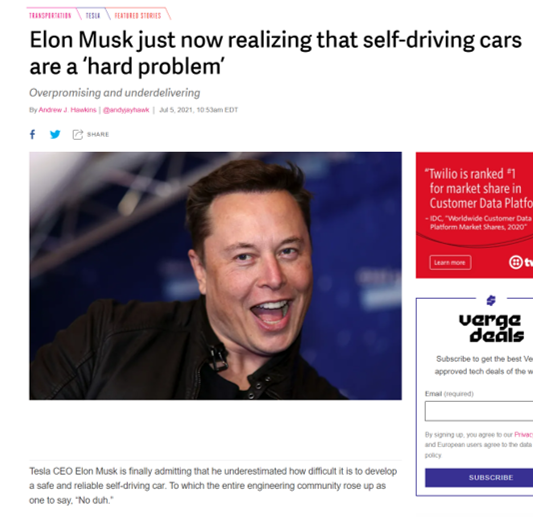
ML Perception
"We should be able to do 90 percent of miles driven [autonomously] within three years." (Musk, 2013)
"From a technology standpoint, Tesla will have a car that can do full autonomy in about three years, maybe a bit sooner." (Musk, 2015)
"I feel very confident predicting that there will be autonomous robotaxis from Tesla next year." (Musk, 2019)
...
"I predict that there will be millions of Teslas operating fully autonomously in the second half of next year." (Musk, 2025)

ML Perception

ML Perception
"We should stop training radiologists now. It’s just completely obvious that within five years, deep learning is going to do better than radiologists." (Hinton, 2016)

ML Perception
"We should stop training radiologists now. It’s just completely obvious that within five years, deep learning is going to do better than radiologists." (Hinton, 2016)

ML Perception
"We should stop training radiologists now. It’s just completely obvious that within five years, deep learning is going to do better than radiologists." (Hinton, 2016)

ML Perception


ML Perception

"... step 1: solving intelligence, step 2: use it to solve everything else..." (Hassabis, 2025)
"Artificial General Intelligence (AGI) will emerge in the next five or 10 years." (Hassabis, 2025)
ML Perception
"In from three to eight years we will have a machine with the general intelligence of an average human being." (Minsky, 1970)
"In medicine, management, and the military — indeed in most of the world's work — the daily tasks are those requiring symbolic reasoning with detailed professional knowledge." (Feigenbaum, 1982)
"... step 1: solving intelligence, step 2: use it to solve everything else..." (Hassabis, 2025)
"Artificial General Intelligence (AGI) will emerge in the next five or 10 years." (Hassabis, 2025)
ML Perception

ML Perception

Machine Learning Problem Requirements
1. Massive combinatorial search space
2. Clear objective function (metric) to optimise against
3. Lots of data and/or accurate and efficient simulators
ML Perception

Machine Learning Problem Requirements
1. Massive combinatorial search space
2. Clear objective function (metric) to optimise against
3. Lots of data and/or accurate and efficient simulators
ML Perception

Machine Learning Problem Requirements
1. Massive combinatorial search space
2. Clear objective function (metric) to optimise against
3. Lots of data and/or accurate and efficient simulators
ML Perception
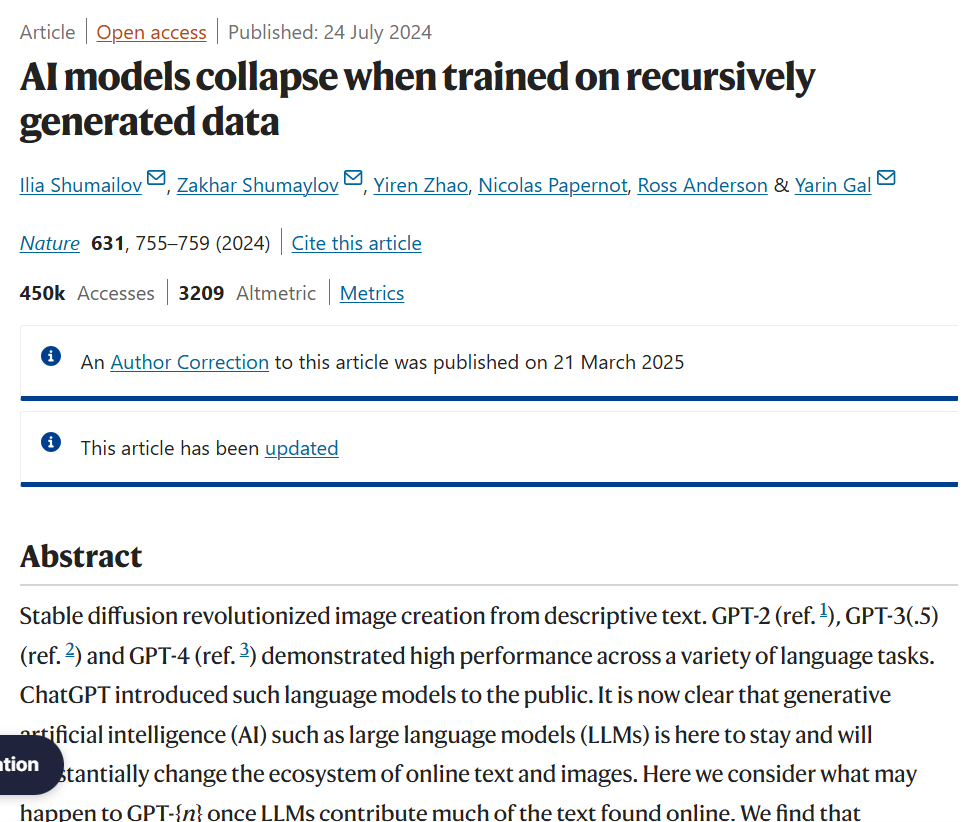
Machine Learning Problem Requirements
1. Massive combinatorial search space
2. Clear objective function (metric) to optimise against
3. Lots of data and/or accurate and efficient simulators
ML Scientific Approach

ML Scientific Approach

"It seems to me what is called for is an exquisite balance between two conflicting needs: the most skeptical scrutiny of all hypotheses that are served up to us and at the same time a great openness to new ideas. Obviously those two modes of thought are in some tension. But if you are able to exercise only one of these modes, whichever one it is, you’re in deep trouble. (The Burden of Skepticism, Sagan, 1987)
ML Definition
ML Definition
ML Definition
ML Definition
Our definition before...
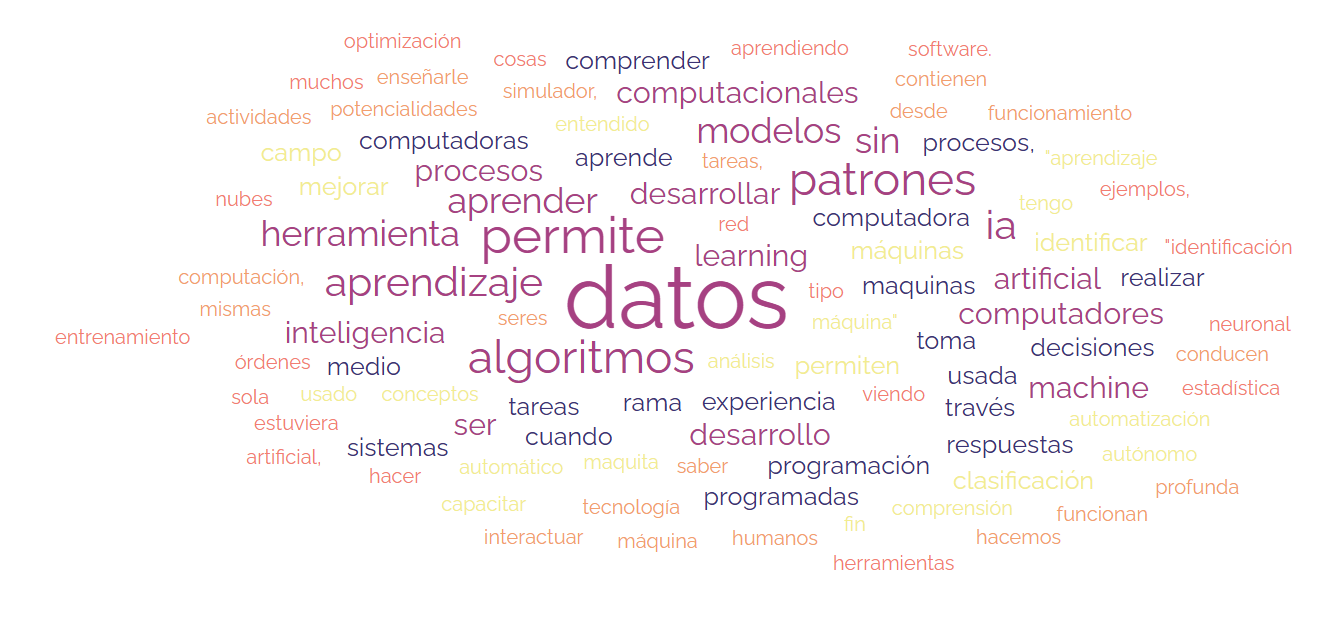
ML Definition
ML Definition
Our ML projects must have a purpose...

Conclusions
Conclusions
Conclusions
Overview
- ML Context
- AI History
- AI Perception
- AI Winters
- ML Today
- ML Applications, Promises, and Risks
- ML Perception
- ML Definition
Conclusions
Overview
- ML Context
- AI History
- AI Perception
- AI Winters
- ML Today
- ML Applications, Promises, and Risks
- ML Perception
- ML Definition
Next Time
- ML Adoption Process
- ML with Purpose
- ML and Socio-technical Systems
- Data Orientation
- Data Access